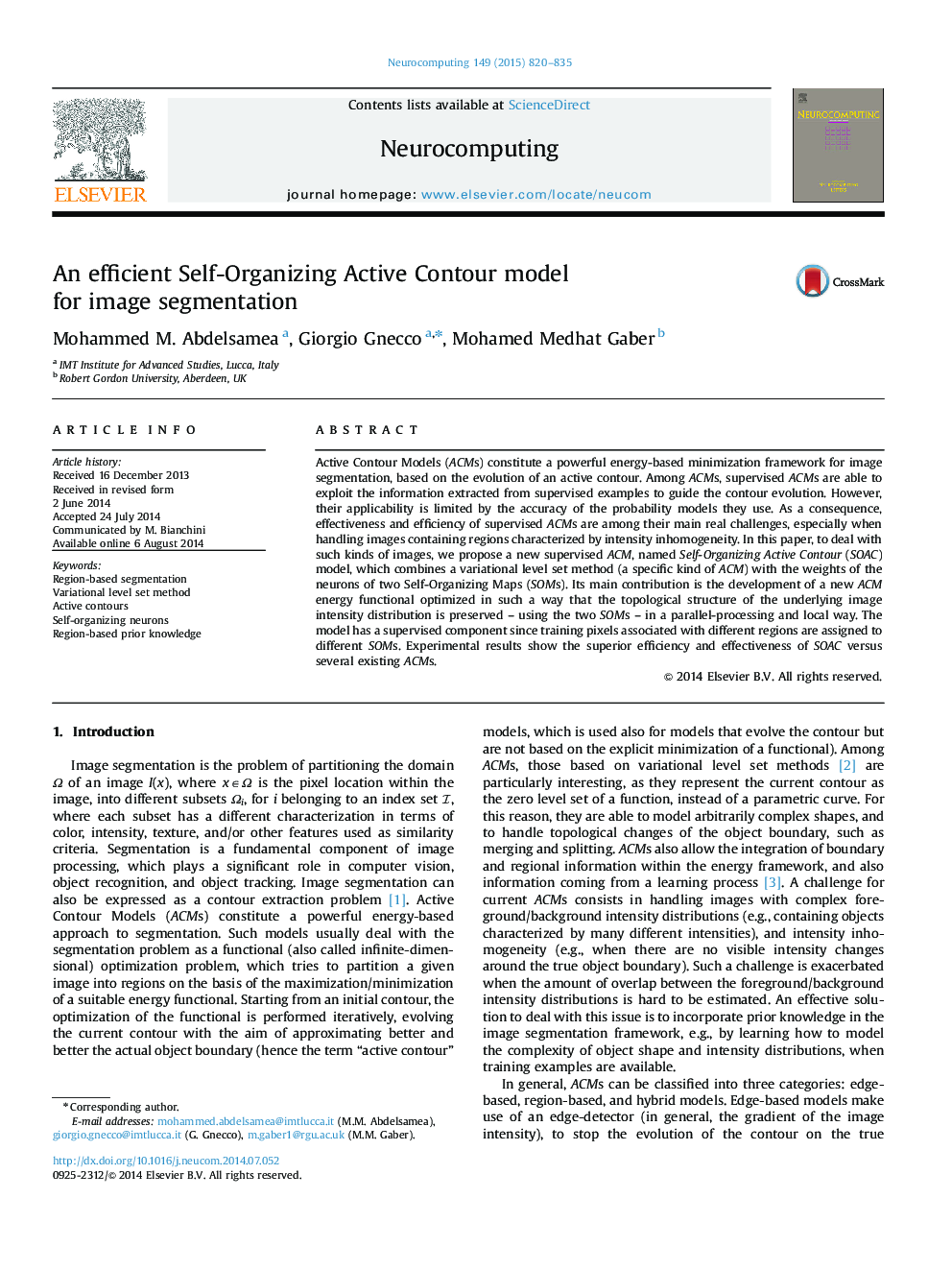| Article ID | Journal | Published Year | Pages | File Type |
|---|---|---|---|---|
| 409784 | Neurocomputing | 2015 | 16 Pages |
Active Contour Models (ACMs) constitute a powerful energy-based minimization framework for image segmentation, based on the evolution of an active contour. Among ACMs, supervised ACMs are able to exploit the information extracted from supervised examples to guide the contour evolution. However, their applicability is limited by the accuracy of the probability models they use. As a consequence, effectiveness and efficiency of supervised ACMs are among their main real challenges, especially when handling images containing regions characterized by intensity inhomogeneity. In this paper, to deal with such kinds of images, we propose a new supervised ACM, named Self-Organizing Active Contour (SOAC) model, which combines a variational level set method (a specific kind of ACM) with the weights of the neurons of two Self-Organizing Maps (SOMs). Its main contribution is the development of a new ACM energy functional optimized in such a way that the topological structure of the underlying image intensity distribution is preserved – using the two SOMs – in a parallel-processing and local way. The model has a supervised component since training pixels associated with different regions are assigned to different SOMs. Experimental results show the superior efficiency and effectiveness of SOAC versus several existing ACMs.
